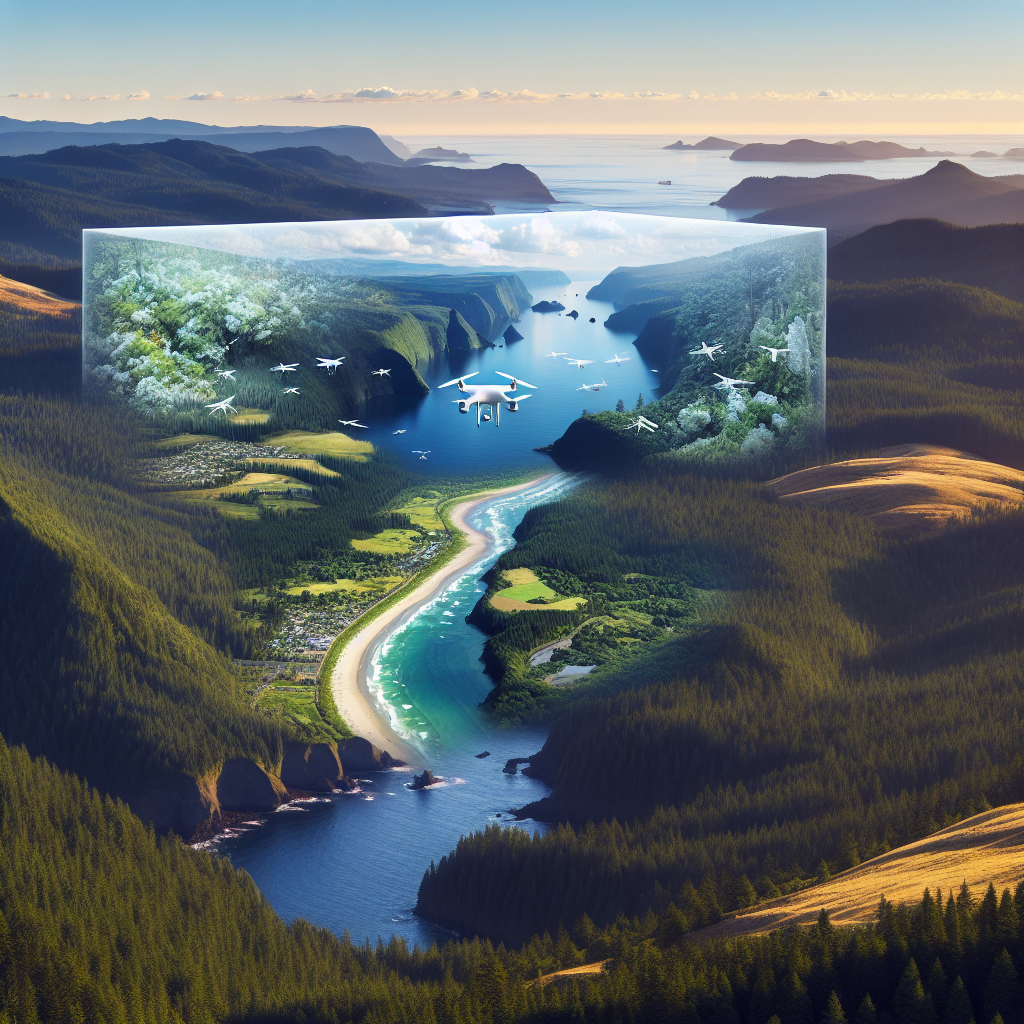Spreading Green through Silicon and Steel: AI and Environmental Monitoring in Oregon
The crisp morning air prickles with the scent of pine as dawn breaks over Crater Lake. It’s another beautiful day in Oregon, a state blessed with the sublime majesty of nature. From the lush Willamette Valley to the rugged coastline and the snow-capped Mount Hood, the splendor of Oregon leaps out in greens, blues, and all colors in-between.
But the beauty of our beloved state is under threat and its protection has become crucial. This is why we’ve rolled up our flannel sleeves and headed straight into the frontier of conservation: AI and environmental monitoring. That’s right! In Oregon, we’re swapping our rain boots for tech boots and, let me tell you, they fit pretty snug.
Green Silicon
In the heart of Silicon Forest, nesting between Portland and Beaverton, innovative minds are coming together to use artificial intelligence to create game-changing tools for environmental conservation. You’ve surely heard of Intel and Tektronix, our big players here, but there are many more start-ups and SMEs making great strides in this field.
For example, TAI Tech, headquartered in Bend, has recently developed an AI system that tracks and analyzes wildlife patterns. And, let’s not forget Bend Environmental Systems, they’ve created an AI-enabled sensor to monitor air and water quality real-time around the Three Sisters range. Their work is the sweat of their brow and powered by pure Oregonian grit and creativity. It’s like saying “live long and prosper” but in techie style.

The Wonders of AI in Conservation
When you’re able to process and analyze terabytes of data faster than finishing a cup of Dutch Bros coffee, conservation takes on a whole new perspective. AI can identify patterns, predict dangers, and provide real-time info on changes in predefined areas. Our beloved wildlife parks and nature reserves, from LaPine State Park to the Rogue River Siskiyou National Forest, deploy these applications to protect their flora and fauna.
Picture a system capable of tracking the migration of Roosevelt Elk at Mount Hood, or estimating the growth of the Douglas-Fir population in Silver Falls State Park. It’s about as intriguing as finding a dry day in Astoria! This fusion of technology and environment offers a glimmer of hope for our state’s, and planet’s, future.
AI can also accurately predict weather patterns, critical for a state where weather conversations often start with “Well, now, ain’t this some weather?” The beauty of AI is its ability to learn from complex patterns and take local microclimates into account, making it a godsend during fire seasons.
Challenges and Concerns
Sure enough, there’s no place on Earth (or Oregon for that matter) where it all sunshine and rainbows, or in our case – mist and microbrews. Integrating AI in environmental monitoring in Oregon isn’t without its challenges. For starters, the technology needs a lot of data, and capturing this in the rugged wilderness of the Cascades or along our unpredictable coastline is easier said than done.
And then, of course, there’s the ongoing debate about technology disrupting the natural balance of things. Sure, it sounds a bit like a Portland hipster trying to argue that his vintage typewriter is superior to a laptop, but the fact remains, we have to tread carefully. Our love for nature must be at the forefront of every step we take, even if that step is assisted by AI.
Looking Towards the Horizon
With bated breath and bright-eyed optimism, we Oregonians look forward to a new era. An era where AI acts as a powerful ally in protecting our verdant landscapes and rich wildlife.
As we navigate the Rogue River of technological development, we remain rooted in our love for our state. From the towering Mount Hood to the smallest acorn under a mighty Oregon Oak in the Gardens of The Grotto, the idea is not to replace the raw appeal of nature, but to safeguard it for generations to come.
So, the next time you find yourself sipping on an ice-cold Deschutes beer at Crux Fermentation Project in Bend or enjoying the dazzling sunset at Cannon Beach, know that Oregon’s AI brains are at work, ensuring that our environment stays thriving.
In Oregon, the synergy of AI and environmental monitoring isn’t just about conservation. It’s our commitment to preserving the soul of our state. It’s about learning, adjusting, and evolving without losing our very essence. A promise of a sustainable future where our children can experience the same love and appreciation we have for the place we call home.
